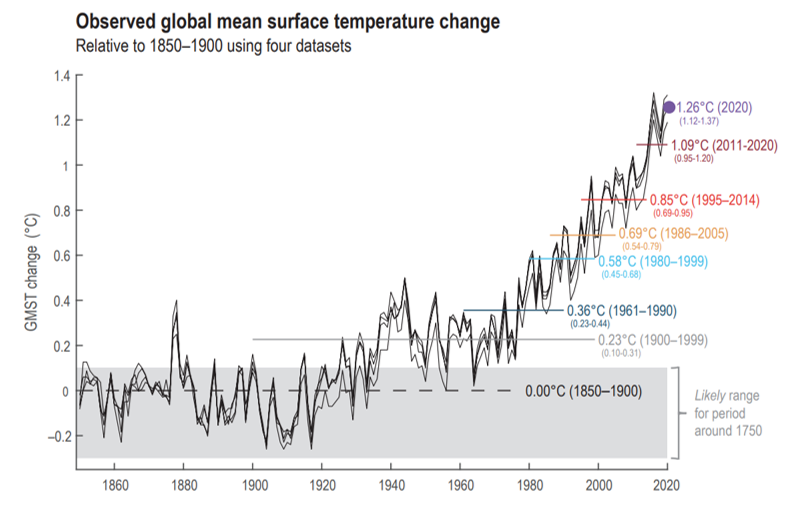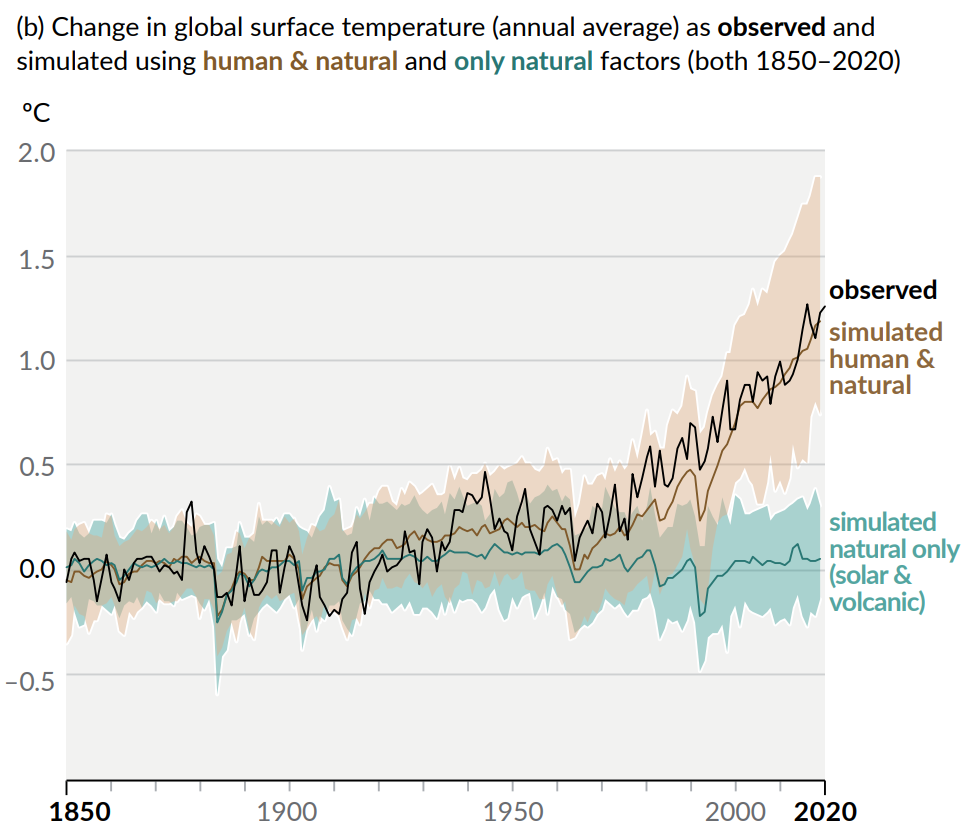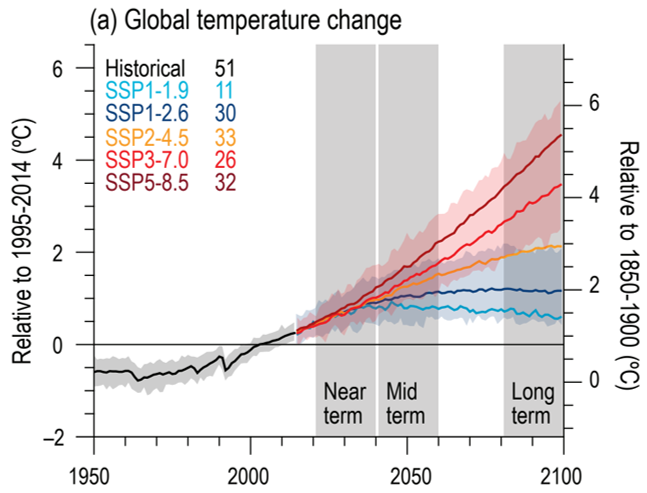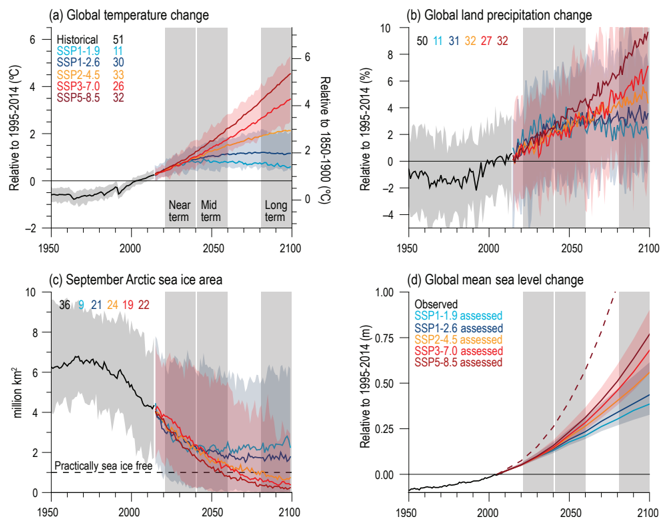The Sixth Assessment Report released by the Intergovernmental Panel on Climate Change (IPCC) reported that the global average temperature for 2011-2020 was around 1.09 ℃ higher than between 1850 and 1900*1 (Figure 1). In their announcement, they determined for the first time that “there is no doubt that human impacts have warmed the atmosphere, oceans, and land areas.” Figure 2 shows the change in the Earth’s average temperature for the period 1850-1900. While simulations based on climate models that consider only natural factors show little change in temperature (solid green line), when anthropogenic factors are also considered, temperatures have increased since the late 1990s, which is very close to the trend of temperature increases observed in reality. This means that the temperature increase observed worldwide cannot be explained solely by naturally occurring factors.
- Top
- Science
- Global Warming Prediction
Current Climate Change Predictions−What will the Earth’s temperature be at the end of the 21st century?
So, how will global temperatures rise in the future? Projections using several of the world’s leading climate models have reported that by the end of the 21st century, temperatures will rise 1.3 to 2.4 ℃ assuming low greenhouse gas emissions (scenario) and 2.8 to 4.6 ℃ assuming high emissions*2 (Figure 3).
It has been pointed out that natural disasters such as heat waves and heavy rainfall will increase due to the rise in global temperatures. Recently, the number of days with extreme heat and heavy rain has also been increasing in Japan,*3 which is felt in daily life (Figure 4). In order to maintain a secure environment for future generations, various activities and research on climate change prediction continue.
However, climate change studies have indicated errors among the climate models used in the projections, as evidenced by the reported temperature increases of 1.3 to 2.4 ℃ and 2.8 to 4.6 ℃. Considering that the temperature increase over the past 100 years has been around 1.09 ℃, this gap between models is very large.
So why has this occurred? The next section explains the reasons for these large errors.
*1 Intergovernmental Panel on Climate Change (IPCC) Sixth Assessment Report Summary for Policymakers:
*2 Intergovernmental Panel on Climate Change (IPCC) Sixth Assessment Report Summary for Policymakers Table SPM.1
*3 Climate Change Observations, Projections and Impact Assessment Integrated Report 2018 - Climate Change and its Impacts in Japan:



